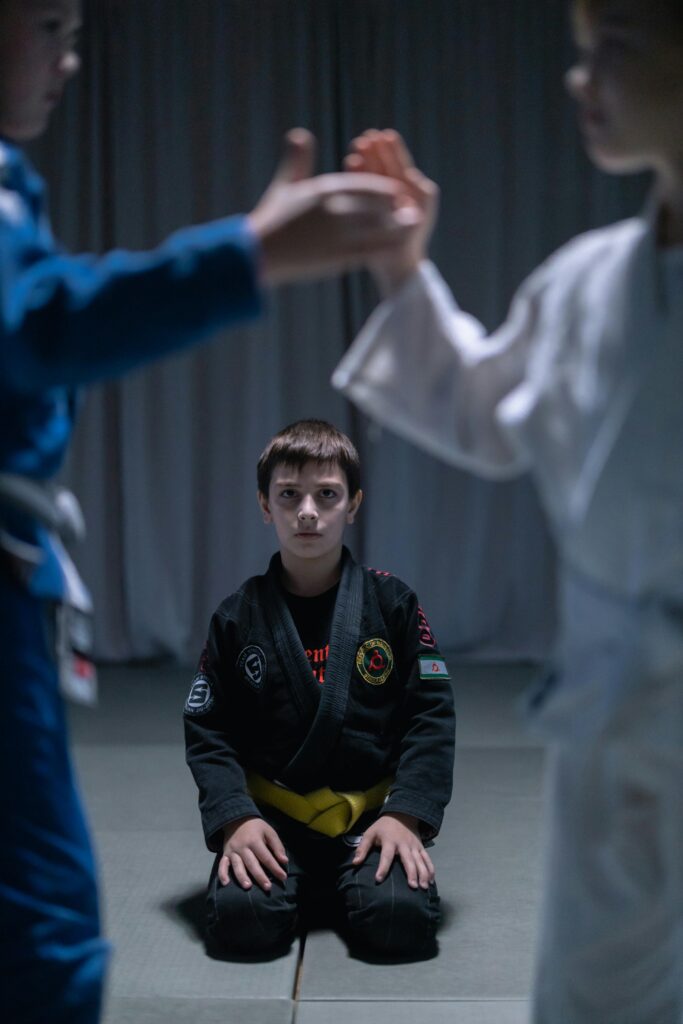There’s a big difference between being paranoid and being prepared. You don’t need to live in fear, but you should understand how predators think so you can avoid danger before it ever reaches you.
Most people who get attacked say they “never saw it coming.” But the truth is, predators give off warning signs—if you know what to look for. Whether you’re walking through a parking lot, waiting for an Uber, or out for a run, your awareness is your first line of defense.
By the time you finish reading this, you’ll know how to spot trouble before it happens, recognize predator behavior, and make yourself a hard target—the kind of person attackers don’t want to mess with.
Understanding the Mindset of Predators
Criminals don’t attack at random. They observe, test, and select. If you seem distracted, timid, or unaware of your surroundings, you make their job easy. But if you know what to look for and how to carry yourself, you can shift the odds in your favor before a predator even considers making a move.
The Power of Observation
Predators are patient. They study body language, habits, and awareness levels before deciding who to target. If you’re glued to your phone, digging in your bag, or walking with slumped shoulders, you signal distraction and vulnerability—exactly what criminals look for.
Instead, practice situational awareness at all times:
- Walk with confidence—keep your shoulders back and your eyes up. Even if you don’t feel sure of yourself, look like you are in control.
- Scan your surroundings—be aware of doorways, exits, and unusual movements. A slight glance can tell you a lot.
- Make eye contact with people—not in an aggressive way, but enough to send a clear message: “I see you.” Most criminals don’t want to be seen before they act.
The Role of Confidence and Energy
Predators are risk-averse. They want easy prey, not someone who might resist. If you move with confidence, awareness, and presence, you become a bad target.
- Stand tall, even if you’re nervous—confidence isn’t just a feeling; it’s a posture.
- Move with purpose—don’t drift aimlessly or hesitate when walking. Know where you’re going.
- Speak with a firm voice—if someone approaches you aggressively, a strong, direct response can disrupt their plan. Most criminals don’t expect resistance early on.
The Three Types of Predators
Not all attackers think the same way. Recognizing different predator types can help you spot danger early.
- Opportunistic Predators – These criminals don’t plan their attacks. They wait for an easy opening, like a distracted person at an ATM or an unlocked car. They rely on speed and surprise.
- Predatory Criminals – These attackers plan and stalk. They study their victims, learn their routines, and wait for the perfect moment. They’re methodical and calculated.
- Social Manipulators – These predators use charm, pressure, or deception to put their victims in dangerous situations. They might pretend to need help, gain trust, or trick you into isolation.
The faster you spot their tactics, the better chance you have to shut them down before they escalate.
Early Warning Signs of a Potential Threat
Most attackers don’t act without testing their targets first. Whether through body language, behavior, or verbal cues, they look for signs of weakness before striking. Recognizing these red flags early gives you time to react, leave, or defend yourself.
Body Language Red Flags
Predators don’t move like normal people. Their body language often feels out of place—something about them just doesn’t fit. Watch for:
- Lurking or pacing without a clear reason—a person who isn’t waiting for someone but seems to be watching or waiting for an opportunity.
- Hands hidden—pockets, jackets, or unnatural hand placements can conceal weapons or indicate nervousness.
- Scanning for witnesses—a predator looks around not out of curiosity, but to see who’s watching. If someone seems overly aware of security cameras, exits, or bystanders, be cautious.
- Ignoring personal space—if someone is too close for comfort, especially when there’s plenty of room around you, they’re testing your boundaries.
Verbal & Non-Verbal Cues
Predators often probe for weaknesses through conversations or subtle actions. They might try to gauge your response to see if you’re an easy target.
Be on guard if someone:
- Asks unusual personal questions—such as, “Are you alone?” or “Where do you live?” These aren’t just friendly inquiries; they’re assessments.
- Ignores your discomfort—if you back away but they keep moving forward, that’s a clear sign of boundary testing.
- Tries to isolate you—phrases like, “Let’s go somewhere quieter” or “Come over here for a second” are major red flags.
- Suddenly changes their mood—if they shift from friendly to hostile in an instant, they might be trying to intimidate or provoke a reaction.
Your reaction should be firm and clear. If someone makes you uneasy, end the conversation and create space immediately.
The Gut Feeling & Instincts
You don’t need to rationalize a bad feeling. Your instincts exist to protect you. If something feels wrong, it usually is.
- If a place or person makes you uneasy, leave. No explanation is needed. Your safety is more important than being polite.
- If someone’s behavior is off, create distance. Move towards a public area or make your presence known.
- If a situation feels wrong, trust yourself and act fast. Whether it’s switching routes, crossing the street, or even yelling for help, don’t hesitate.
The Psychology of Target Selection
Attackers don’t choose at random—they look for the easiest option. The good news? You can make yourself unappealing simply by adjusting how you present yourself.
- Aware – Keep your head up and stay engaged with your environment. If you look alert, criminals will assume you’re more prepared.
- Confident – Walk like you have a destination and purpose. Even if you’re lost, don’t look lost.
- Decisive – If someone enters your space, move away or respond assertively—never freeze or hesitate.
By developing these habits, you can make yourself the kind of person predators don’t want to deal with. And that’s the best defense you can have.
How Predators Manipulate and Control
Predators rarely attack without a plan. They work in stages, testing boundaries, controlling situations, and manipulating responses.
If they can get you to comply, hesitate, or feel unsure, they already have an advantage. This is why recognizing their early moves is critical.
The Testing Phase
Before committing to an attack, predators like to see how much pushback they’ll get.
- Fake emergencies – A stranger struggling with bags, asking for help, or claiming to need directions. The goal? Get you to stop, engage, and drop your guard.
- Boundary testing – Standing too close, touching your shoulder, or brushing against you as if by accident. If you don’t react, they see it as permission to escalate.
- Ignoring your “No” – If you decline a request or step away, and they keep pressuring you, they’re seeing if you’ll hold your ground or fold under pressure.
Your response should be immediate: Step back. Speak firmly. Leave. You don’t owe anyone an explanation.
Isolation Techniques
An attacker’s biggest advantage is getting you alone. If they can separate you from help, they gain control of the situation.
- Leading you into a quiet area – They might say, “Let’s step over here where it’s quieter” or “Come see this real quick” to get you away from a crowd.
- Cutting off your exit routes – Physically blocking a doorway, moving closer to trap you, or positioning themselves between you and an escape route.
- Making up excuses to get you alone – Asking for help somewhere “private” or making a fake invitation that removes you from a safe space.
The moment someone tries to control where you go, take charge. Say, “I’m good right here” or walk in the opposite direction.
Psychological Manipulation
Not every predator uses force. Many manipulate emotions to make you comply.
- “You’re overreacting” – They gaslight you, making you question your instincts.
- “Come on, just for a second” – They downplay your refusal to wear you down.
- Fake authority – Pretending to be a security officer, employee, or mutual acquaintance to make you lower your guard.
Manipulation works only if you let it. The second someone tries to make you doubt yourself, that’s your red flag. Leave immediately.
The “Interview” Process
Predators observe reactions before making a move. If you seem nervous, unsure, or too polite, they see an opening.
When someone makes you uncomfortable, respond with confidence: Look them in the eye, speak firmly, and create distance. The sooner you show resistance, the more likely they are to move on.
Defensive Mindset: How to Avoid Becoming a Target
Predators avoid people who look like trouble. The goal is to project awareness, confidence, and readiness—the qualities that make an attacker think twice.
Environmental Awareness Strategies
You don’t need to be paranoid, just aware.
- Know where you are – When entering a new place, scan for exits, cameras, and escape routes. The first few seconds matter.
- Avoid distractions – Your phone is a liability. If you’re staring at a screen while walking, you’re advertising yourself as an easy mark.
- Listen to your surroundings – Noise matters. If you can’t hear what’s happening around you, you won’t notice danger until it’s too late.
Awareness makes you harder to surprise. That alone reduces your chances of being targeted.
Confident & Assertive Body Language
Attackers don’t pick fights with people who look like they’ll fight back.
- Walk with purpose – Move like you know exactly where you’re going.
- Keep your shoulders back and chin up – This posture sends a message: I’m strong, I’m aware, and I’m not easy prey.
- Look people in the eye – A quick glance tells a predator, “I see you, I remember you, and I’m not afraid.”
If you look strong and aware, you’re already ahead of the game.
The Power of Boundary Setting
Attackers love passive targets. If someone crosses the line, let them know you’re not one of them.
- If someone gets too close, step back. That tiny movement disrupts their control.
- If someone makes you uncomfortable, speak up. A calm but firm “That’s close enough” is enough.
- If necessary, cause a scene. A loud, “Back off!” turns you from a victim into a problem.
Preemptive Self-Defense Techniques
- Carry a personal alarm or tool – A loud sound can startle an attacker and draw attention.
- Learn practical self-defense – If someone grabs or corners you, knowing what to do can make all the difference.
- Train in effective martial arts – The ability to fight back and escape increases your odds of walking away safely.
Self-defense isn’t about fighting for fun. It’s about making sure no one chooses you.
Training Yourself to Recognize & React Effectively
Knowing what to do is good. Training until it’s automatic is better.
Drills to Improve Awareness
- Scan your surroundings every time you enter a place. Make it a habit.
- Practice noticing exits in stores, parking lots, and restaurants. If trouble starts, you’ll know where to go.
- Role-play scenarios with people you trust. Training in real-life situations builds speed, confidence, and instinct.
The Role of Self-Defense Training
If you haven’t trained in real-world self-defense, you’re leaving too much to chance. Whether it’s youth self-defense classes, self-defense courses, or private lessons, hands-on training prepares you in ways nothing else can.
If an attacker makes a move, your body should already know what to do.
Developing a “Combat Mindset”
Your mindset is your first weapon.
- Be ready to act. The worst time to hesitate is when it counts.
- Decide now that you will fight back if necessary. Make that choice before you need it.
- Train until reactions become automatic. When instinct kicks in, you don’t have to think—you just move.
A predator’s biggest advantage is your hesitation. The sooner you act, the better your chances of walking away unscathed.
Stay Ahead of the Danger—Train Like It Matters
Knowing how to spot trouble before it happens is a powerful skill. Criminals look for easy targets, but you won’t be one of them. When you understand predator behavior, carry yourself with confidence, and trust your instincts, you create an invisible shield that keeps threats away.
But awareness alone isn’t enough. You need hands-on skills to back it up. That’s where Eye2Eye Combat’s private defense classes come in. Whether you’re new to self-defense or refining your technique, we’ll teach you real-world strategies to stay safe and in control. Train with us—because your safety is too important to leave to chance.
FAQs
Q1: What are some early warning signs that someone might be a threat?
Individuals with harmful intentions often exhibit certain behaviors, such as invading personal space, making inappropriate comments, or displaying excessive interest in personal details. Trust your instincts; if something feels off, it’s important to stay cautious.
Q2: How can I improve my situational awareness in daily life?
Stay alert by minimizing distractions like phone use when walking, regularly scanning your environment, and noting exits in unfamiliar places. Practicing these habits can help you recognize potential threats early.
Q3: What should I do if I feel I’m being followed?
If you suspect someone is following you, remain calm. Change your route, head towards populated areas, and seek assistance if necessary. It’s also helpful to inform security personnel or law enforcement about the situation.





